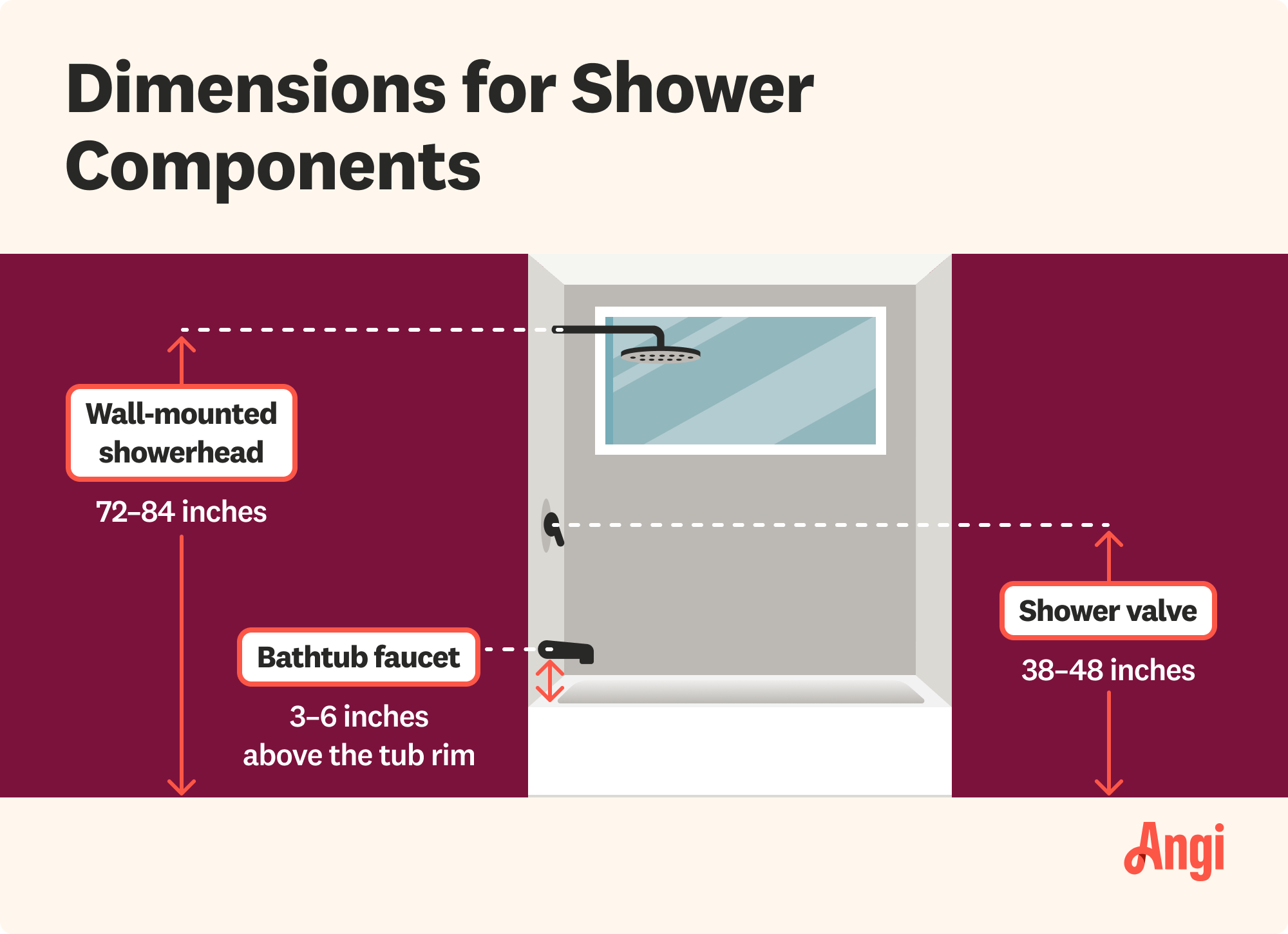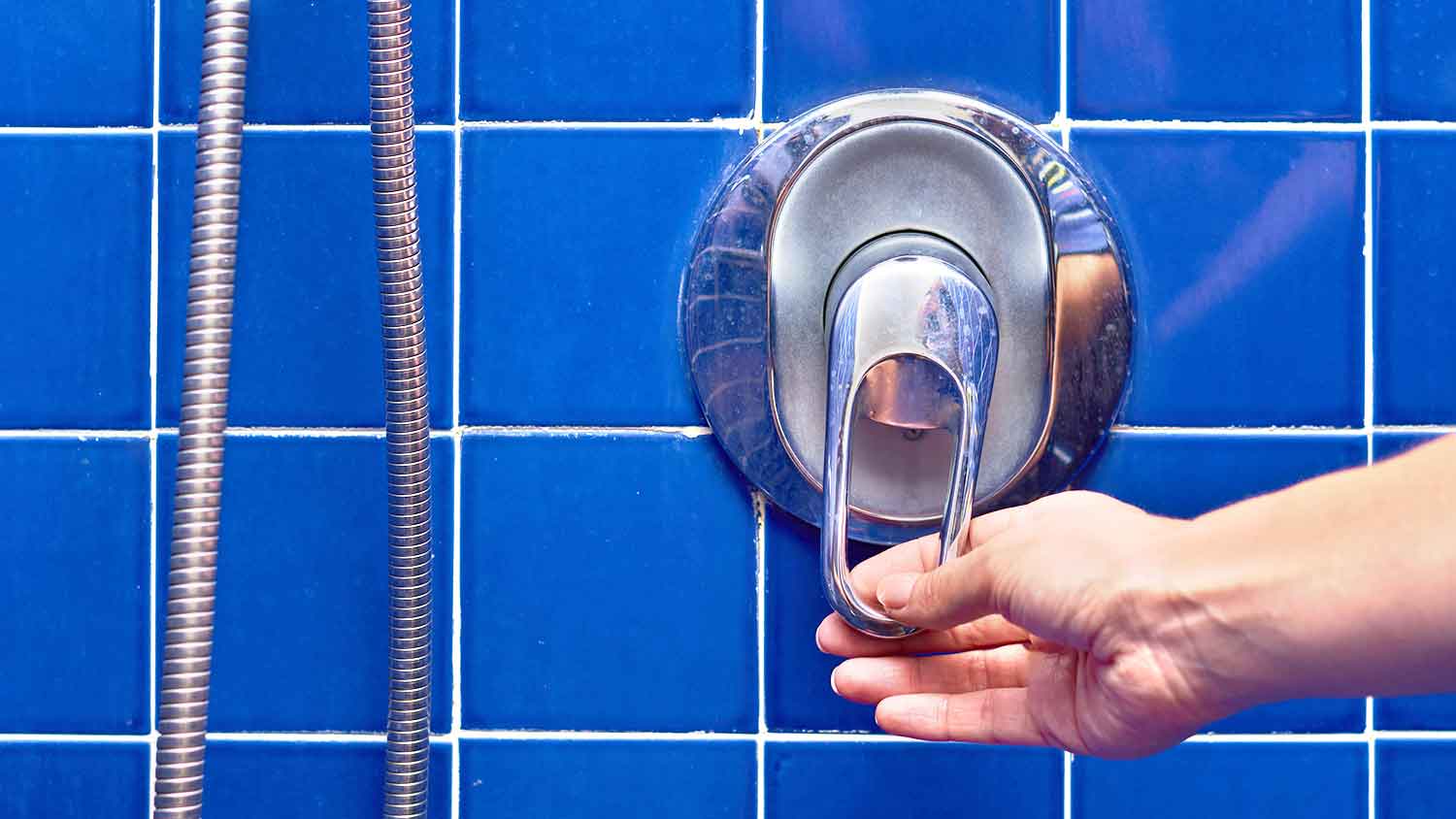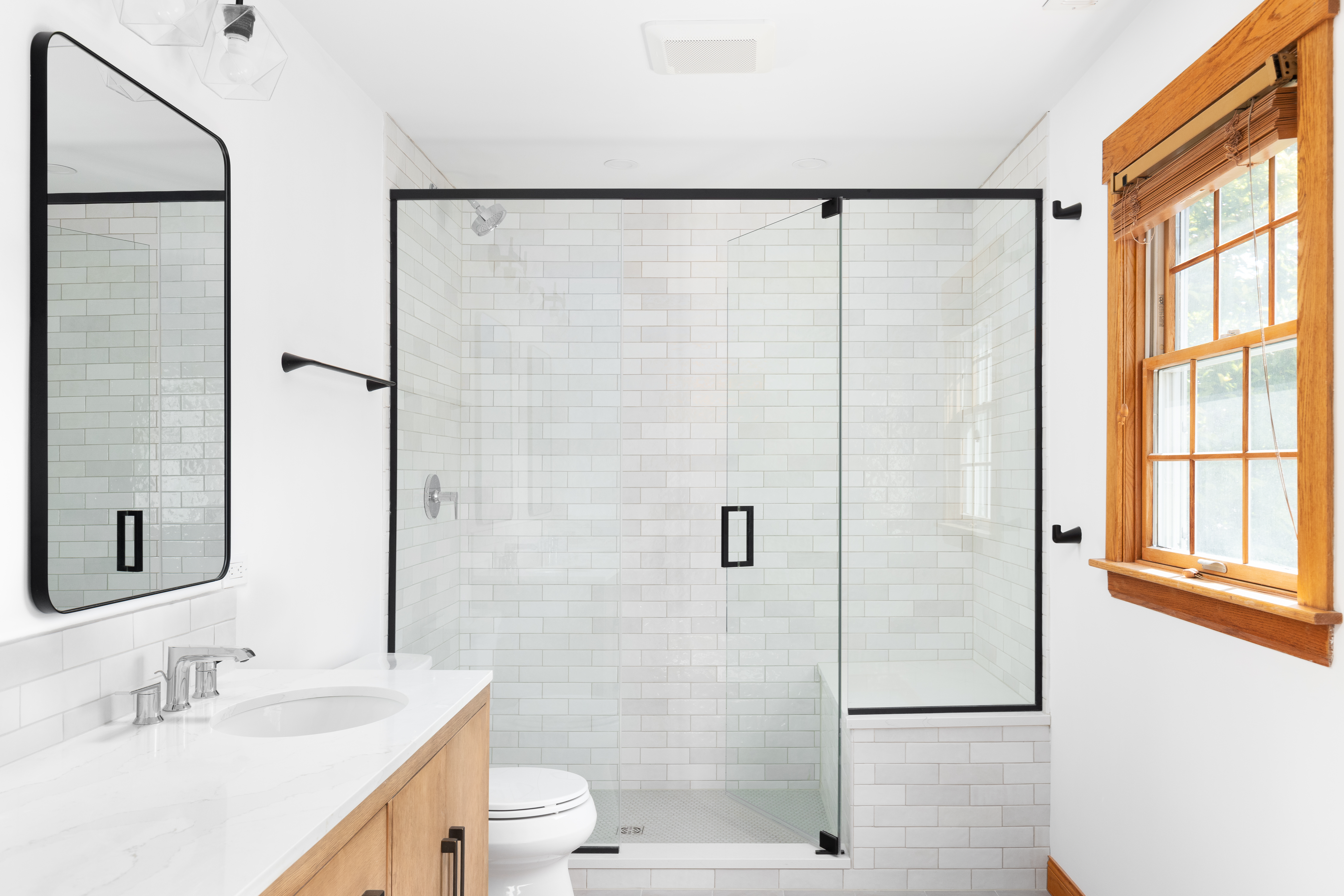
Do you want to add a mudroom to your home but are unsure if it’s within your budget? Use this mudroom addition cost guide to determine your installation price range.
Designing your shower is all about comfort


Most shower valves are 38 to 48 inches above the shower floor.
This height is required for ADA compliance.
Tub-shower combos use a lower height of 30 to 38 inches.
Most walk-in showers or shower stalls use a height between 40 and 48 inches.
When choosing a height, consider what’s going to be most comfortable.
Your shower valve, also known as your shower controls, lets you control the temperature and flow of water. You can’t take a shower without it, and it’s mounted somewhere between your showerhead and tub faucet. The exact height plays an essential role in the safety, accessibility, and comfort of your shower experience. This guide will walk you through the right shower valve height for your shower upgrade or remodel.

There is no standard shower valve height, but most contractors install shower valves roughly 38 to 48 inches above the shower floor. Though each shower installation is slightly different, this range suits most adults of average height. Your shower valve should be at a comfortable height so you can easily adjust the temperature and water flow when using the shower. If you’re shorter or taller than average, you may want to deviate from the normal range.
The ideal height for your shower valve depends on the type of shower.
| Type of Shower | Average Valve Height (Inches) |
|---|---|
| Walk-in shower | 40–48 |
| Tub-shower combo | 28–38 |
| ADA-compliant | 38–48 |
For a walk-in shower or traditional shower stall, most people find a shower valve height of 40 to 48 inches from the shower floor the most comfortable. This taller height allows you to comfortably adjust your shower controls while standing. Depending on your setup, you’ll want to consider going with a shower diverter valve, which switches the flow of water to a handheld sprayer.
If you have a tub-shower combo, you can install your shower valve at a slightly lower height, between 28 and 38 inches from the shower floor. A lower height allows you to comfortably adjust the controls from a seated position while using the tub. The higher you install it, the more comfortable it will be when using a shower.
The Americans with Disabilities Act (ADA) recommends installing shower valves a minimum of 38 inches or a maximum of 48 inches above the shower floor. Keep in mind, if you’re building a roll-in shower, the threshold of your shower should be no taller than 1/2 inch to allow for wheelchair accessibility.
ADA requirements dictate which shower walls can safely house your shower valve, among other details, so make sure you consult an accessible bathroom remodeler before starting this project.
Your shower plumbing relies on a careful balance of key measurements. Get the balance wrong, and it will be awkward to use. Luckily, measuring the shower valve height is relatively simple. Most plumbers will rough-in the valve along with the rest of the plumbing before installing the shower or tub. This requires knowing the height of your shower flooring—whether it’s a shower stall, tiling, or the bottom of your tub. Grab a tape measure and follow these steps:
Measure the shower floor: Measure the thickness of your shower pan or bathtub if you have a tub-shower combo. To get the bathtub thickness, measure the distance from the top of the bathtub wall to the bathroom floor, then measure the distance from the top of the bathtub wall to the bathtub floor (where you sit in the tub). The difference between these numbers is the thickness of the tub floor. Record this figure on a piece of paper.
Measure the tile: If you’re putting tile over your shower area, measure the thickness of the tile. Add ¼ inch for each layer of mortar you plan to use.
Measure the floor leveler: If you’re using a self-leveler (a type of compound or concrete that flows evenly and that levels itself out) to level your shower floor, be sure to record the thickness.
Find the total thickness of your shower floor: Add the thicknesses of the materials you previously measured together. This is the total thickness of your shower floor.
Determine the shower valve height: Choose a height for your shower valve. The most common height is between 38 and 48 inches from the bottom of the showerhead to the shower floor.
Find the total height: Add the thickness of your shower floor (from step four) to the desired height of your shower valve (from step five). This final figure is the height your shower valve should be from the floor of your bathroom.
While you may want to plan the height of your shower valve in advance, shower installation is not a basic DIY project. Always call a professional plumber with the knowledge and experience to work on bathroom plumbing. If you hire a pro, an average shower installation costs $4,500 to $12,400.

Though most shower valves are installed 38 to 48 inches above the shower floor, some factors must be considered when choosing the exact height. This will impact the way your shower looks and feels when you use it. Plan for the following when creating your shower layout.
Consider the height of those in your household. If you have children, you may want to install a shower valve on the lower side of the standard height range. If you’re taller than average, you may want to install a shower valve on the higher end—or even stretch it above the normal range.
If you have other shower features, like a spray nozzle, shower diverter, or controls for multiple heads, take those into account. If you add a shower chair, bench, or stool that’s within reach, you may want to factor that in as well and choose a height you can reach while sitting.
Where your shower valve is located impacts the look of your shower. Make sure the controls look visually balanced with the rest of your visible plumbing. You can browse shower ideas online for inspiration and to find the look you like.
While there’s no standard shower valve height mandated by the International Residential Code (ICC), there could be specific regulations in your local building code. Always check before you start a plumbing project. If you plan to build an accessible shower, the height of the shower valve should meet ADA guidelines, which dictate the overall requirements for the layout of your bathroom.
Things happen. An inexperienced DIYer will install a shower valve at an awkward height, or you’ll have plumbing left behind when you convert your tub into a shower. There’s no problem using a shower with a valve at a less-than-ideal height as long as it’s not a safety issue, but you may want to move it for your comfort.
In this case, call a shower installer near you to give your shower a makeover. Hiring a pro is the best option when working on your home’s plumbing because water damage from an improper DIY can cost more than the job itself.
From average costs to expert advice, get all the answers you need to get your job done.

Do you want to add a mudroom to your home but are unsure if it’s within your budget? Use this mudroom addition cost guide to determine your installation price range.

Remodeling your bathroom can add significant value to your home. Your bathroom remodel cost in New York, NY will depend on size, fixtures, materials, labor, and other factors.

Shower installation costs in New York, NY depend on size, style, and materials. No matter the budget, this guide can help you plan your project and even save a few bucks.

Adding kitchen cabinets to your ceiling is a budget-friendly way to increase your storage space and make your kitchen look more attractive.

If your shower door has been acting up, it’s time to get it back in working order. You can adjust a shower door with some common adjustments.

An updated bathtub can give a bathroom a whole new look. Find out how much it costs to replace a bathtub in Kansas City, MO, including prices by type and labor costs.